Maine banks go mobile to net new customers
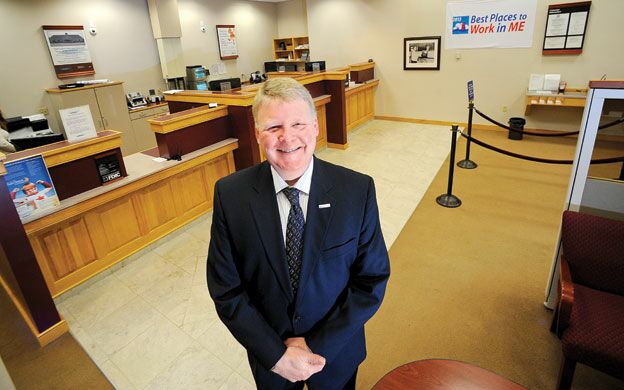 PHOTo / Amber Waterman
Paul Andersen, president and CEO of Androscoggin Bank in Lewiston, says online transactions will outnumber those in all 13 of its branches this year.
PHOTo / Amber Waterman
Paul Andersen, president and CEO of Androscoggin Bank in Lewiston, says online transactions will outnumber those in all 13 of its branches this year.
Banks have come a long way since Uncle Billy misplaced his deposit and almost ruined George Bailey's building and loan company in the 1946 film “It's a Wonderful Life.” Nowadays, more people are taking to the Internet to make deposits and pay bills, and walk-up teller windows are giving way to smarter ATMs and mobile device apps. Maine's community banks are trying to retain and attract customers by offering new high-tech services, while keeping their stock-in-trade, personalized service.
“This year, we'll do more transactions online than in all of our 13 branches combined. It's a fundamental shift in how people like to bank,” says Paul Andersen, president and CEO of Lewiston-based Androscoggin Bank, which has $771 million in total assets. He says the transition started five years ago. “These are not revenue plays. They are ways for our clients to access us.”
The change in environment and what the consumer expects is rapidly evolving, so just having branches or ATMs won't work, adds June Parent, executive vice president, retail banking division at Camden National Bank in Camden, which has total assets of $2.6 billion, making it one of the top three Maine-based banks.
“We need multiple delivery channels, including smart ATMs and telephone banking and newer online and mobile services,” she says.
Camden National has been in the online space since the late 1990s. In 2010 it transitioned into more robust online and mobile services, including bill pay, external transfers and person-to-person payments. Still, she says branches will always be needed. “Regardless of the generation, people want the interaction,” she says.
Online services haven't proven to be money makers yet, and many banks don't even charge for them. Andersen says Androscoggin nonetheless has eschewed the move some large banks have made to offset those free services: charging customers to see a human.
A recent study by the Federal Deposit Insurance Corp., “Community Banking in the 21st Century,” found that community banks can continue to offer personalized service, but they need to figure a way to stand out from other banks and credit unions. They also are facing increasingly heavy compliance regulations, which can weigh on profits. While regulators worry about banks that are too big to fail, some in the banking industry worry that some banks are too small to succeed and need to update their strategies to survive.
A few, like Northeast Bancorp of Lewiston, established Internet-only banking operations in addition to their brick-and-mortar businesses. Northeast's Internet bank, started about a year ago, is called ableBanking. It aims to offer better rates than brick-and-mortar banks and in some cases, the ability to target money for charity.
A 2009 survey for the Maine Association of Community Banks by First Wellesley Consulting Group Inc. found that 95% of respondents agreed or strongly agreed that banks must offer full Internet and mobile banking services to attract Gen X (born 1965-1980, according to Pew Research) and Y (Millennials, born in the 1980s) customers, as well as the emerging Gen Z (born in the 1990s). Those mobile services include banking/bill payment, mortgage loan applications, cash management, remote deposits, eStatements and chat. At the time of the survey, only 23% of respondents offered mobile banking, but 65% planned to do so within the next year. Also at the time, fewer than 2% of respondents used their mobile devices for banking.
Fast forward to this year, when 37% of community banks offer mobile payments, according to the Independent Community Bankers of America, an organization representing 7,000 community banks in the United States. In its biennial Community Bank Payments Survey released in November, the ICBA found that another 43% of respondents intend to offer mobile payments to their customers by 2015, with larger community banks having $501 million or more in assets leading the way. Of the banks currently offering mobile payments, 95% use a mobile app, 85% facilitate payments via the Web and 36% use Short Message Service/text. Figures for Maine alone were not available. Electronic payments usage continues to eclipse paper checks, the survey found.
“Every Thursday BIW [Bath Iron Works] workers used to line up to cash their checks in the bank. Now they have direct deposit,” says Barbara Lee Gaul, vice president of marketing at Bath Savings Institution in Bath, which has $702 million in total assets.
Bath Savings is a community bank, but it also is a mutual savings bank that is owned by its depositors. In 2008, she says the bank became one of the first in Maine to offer mobile banking. “You have to add new things, but you also have to keep the old things as well,” she says, adding that Bath Savings still has some customers with passbook savings accounts who visit teller windows.
The bank now has more than 8,000 online users, which is about half of its checking account customers. Last year it invested in an app for smart phones and the iPad. “The more products you have with a customer, the more tied to you they become and the less likely they are to switch banks,” she says. That especially applies to bill payments and loans.
The question is, she says, how to keep a customer who isn't coming into the bank. In fact, she knows personally about one customer the bank lost, and whom she plans to get back.
“Someone told me their child from college was looking for something online and couldn't get an answer quickly from our website, and that I lost a customer from that,” she says. “But we will win that customer back when they have a problem with their account. As soon as you have an issue and it involves your money, you really do want to talk to somebody.”
Bridging the future
Banks also are trying to figure out how to shift their customer base from well-heeled baby boomers to their adult children, who may be more open to new services like online check deposit and other mobile banking applications. The First Wellesley study found that four years ago most bank customers, close to 80%, were baby boomers, with none in the Gen X and Gen Y categories. The survey also found that the primary new bank customers would be Gen X and Gen Y.
“The trend we all have to watch is mobile banking and mobile payments. It's a generational trend,” says Cary Whaley, vice president of payments and technology policy at the ICBA in Washington, D.C. “You have a complete generation where this is how they do banking and this is how they want to talk to their friends. They're called 'digital natives,' the 'net gen' or 'Gen Z.' It's a group that has never known an offline life.”
He adds, “A mobile app is a good way to get an 'in' to a customer, but it always has to be changing. Right now people use it [mobile] to check their bank account and balances. But all it takes is one cool app [for mobile to explode].” He says apps need to be very easy to use so they don't require a tutorial and they need to be cool, like the Starbucks rewards app that has a coffee cup with stars that move if you shake your phone.
“People love that app,” he says.
While banks still need to offer service when something goes wrong, Whaley says a branch visit for basic banking functions adds friction to a customer relationship with wait times and lines, for example. To help ease the frustration, many banks are now offering check deposits using mobile phones.
“Banks need to monetize the customer relationship, not the specific service,” says Whaley. “Community banks are starting to migrate from each bank service having profitability to being willing to take a loss on debit cards because a customer is more likely to take out a loan [if other services are available].”
Still, he acknowledges that the trickier thing is the people who haven't signed up for electronic service. Only 50% of customers now are registered for online banking on their computer, he says, even though that service has been offered for a long time. “Just because a bank offers the application doesn't mean folks will download it,” he adds.
Jonathan Roderick, vice president and information technology director at Androscoggin Bank, says more than 100 business clients are using the bank's Automated Clearing House payroll service, and more than half of its account holders, some 7,000, use online or mobile services. Right now that is weighted more toward online access through computers, used by 6,000 of those customers, but Roderick adds that mobile adoption rates are skyrocketing. The bank started offering mobile banking in March 2012.
It also plans to offer mobile check deposit service in 2014, which will allow customers to photograph their check and upload the image to the bank to deposit it, adds Melissa Rock, assistant vice president and marketing manager at the bank. She says the bank is looking at a social media strategy, but bank disclosure requirements make any product description very long for that communication channel.
Androscoggin Bank, like others, plans to push to meet the deadline for compliance with the Europay, MasterCard and Visa, or EMV, global standard for inter-operation of computer chip cards in October 2015. While it still isn't clear whether deployment of chips to protect credit and debit cards will survive until that deadline, she says her bank is looking into it.
The ICBA study found that few banks now offer cards or devices with EMV authentication chips in them, though 42% plan within the next two years to offer debit cards, 27% credit cards and 18% prepaid cards with EMV chips.
Androscoggin also offers an Andropay tax collection system so residents can pay their city or town taxes electronically, and plans to extend it to school lunch fees.
Competition, new and old
The ICBA also found that the most important threats to the banks' payment strategies were the cost of complying with new regulations (68%) and staying current with emerging payments channels (39%). Non-bank payments providers are a new concern in 2013, with 23% of respondents saying they are a threat.
Among the new non-bank competitors is Square Cash, a mobile payments service provider that lets users pay to a friend's debit card. It received a $25 million investment from Starbucks, where the service is in use across the coffee seller's 7,000 U.S. stores. Another example is the Bluebird prepaid card offered by American Express and Walmart.
“More third parties are encroaching with these services. The challenge for banks, both community and larger banks, is they have a fixed geography, but Bluebird and [services like] Capital One 360 online banking are nationwide,” Whaley of ICBA says. “The banks have to think nationally and globally and look at where they can collaborate. In person-to-person banking, a person shouldn't have to be enrolled in eight different services. In the future, a single entry point will let them pay. All that redundancy needs to be taken away.”
Andersen of Androscoggin Bank acknowledges that the bank's field of competition is broad and not restricted to brick-and-mortar banks.
“Banks think competition is right across the street. It's wider than that,” he says. “Competition springs up from new sources every day, and will continue to do so. We focus on what we do with excellence.”
Androscoggin's Roderick adds that online and mobile technologies are fairly common now, so the bank is working to distinguish itself, including by training employees to help customers learn and adapt to the new technologies. “What will differentiate us is the approach we take to introducing these to our clients. Any teller should know as much about these products as anyone in IT.”
Camden National's Parent sees a future filled with technology. In five years, she expects almost all customers to be using portable devices. “It will be tablets, phones or even wrist watches,” she says. “I think there will be things in five years we can't imagine. And convenience banking will be less about the bank and more about the customer.”
George Bailey would likely approve of that.



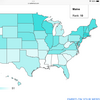


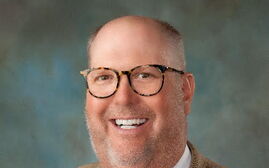
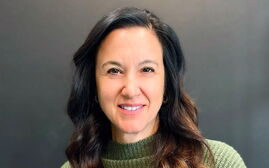

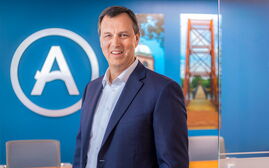




Comments